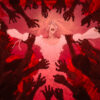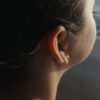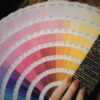Maria Fredriksson learned there was a bit of a Catch-22 in accepting the job of making “The Gullspang Miracle,” telling the story of Kari and May, two Scandinavian sisters in a small town who believed they had stumbled into a divine event. There were times when the filmmaker could believe something similar had happened to her when the call to make the film came from the sisters themselves rather than having to seek it out herself and she learned of the remarkable tale of some house hunting led to the sisters’ belief that they had found the second coming of their late sister Astrid when an embroidered portrait on the wall of an apartment led them to wonder about its owner. Sure enough, they couldn’t help but see a lot of Astrid in Olaug, a woman who would be around the same age as their sister if she hadn’t taken her own life years earlier and it was clear that Fredriksson wouldn’t be wasting her time in following the story wherever it led, though trying to write grant proposals or pitches to potential producers was incredibly difficult for a story that had as many twists as this.
“When I tried to get financing for this, I had to rewrite what kind of film it is again and again and go to the film institute and say, “Oh, I was doing this film but now it’s more this…” says Fredriksson. “I realized at some point I couldn’t control this story so much. It was as if the things happening just happened and I had to follow and that’s also why I tried to let the audience get the same experience watching the film as I experienced making it. At first, I believed it to be one kind of story and then it changed for me.”
All audiences should expect from “The Gullspang Miracle” is one wild ride as Kari and May excitedly accept Olaug as a new sibling, but find that welcoming her into the family opens the door to all kinds of uncomfortable questions about the past. While Olaug’s arrival inevitably stirs up a fresh interrogation of what happened around Astrid’s death, the trio finds that while they may or may not share the same DNA, they certainly have different attitudes from one another about the many curveballs thrown their way regarding the family bloodline when there is a potentially grim explanation for how Kari and May had a sister they never knew about and while the two of them may be satisfied with what’s known to be the circumstances around Astrid’s suicide, Olaug has more doubts, allowing all three to make up for lost time as far as any sisterly squabbles they missed from their decades apart.
With the infectiously enthusiastic Kari and May at the center, “The Gullspang Miracle” can’t help but be plenty of fun, but Fredriksson not to overlook all the other emotions that are suddenly coming to the surface with Olaug’s arrival and the film deftly balances the pull of a riveting mystery against the grip the past has on all involved. After first premiering at Tribeca, the film is now available far and wide on VOD and digital and Fredriksson recently spoke about finding the serious core in a story that lends itself to easy sensationalism, hanging on for dear life as it took so many turns and why it felt like fate that she was the one to ultimately bring the story to the screen.
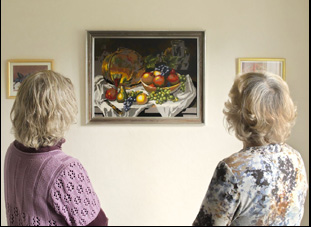 Usually I ask what its someone interested in pursuing a film, but what made you answer the call here?
Usually I ask what its someone interested in pursuing a film, but what made you answer the call here?
They actually contacted the Swedish national broadcaster SVT because people told them that “You experienced a miracle, people should know about this, you should call TV.” So they called the documentary department there, and I made quite a few films about elderly ladies before, so they gave Kari my phone number. They didn’t know me or my filmmaking or anything when they called, but I had just finished my previous film, [which was] actually about two elderly men, and I didn’t know what my next project was going to be, but I thought it was an exciting story they were telling me, so I just went to Gullspang to meet Kari, May and Olaug and have a chat and see if they if they were people that I thought could be in a film.
The film makes great use of the backdrops of their own homes. What was it like entering their world for yourself?
Luckily, I didn’t know what world I was entering and I didn’t know it would take me five years to complete the film from when I first met them. That is good in documentary filmmaking [where] you think you have an idea of what film you’re doing, but you don’t really and very much so in this case. When I met them, I believed that the miracle is out there and it already happened and now they’re a happy family, so what’s there to tell? As a documentary filmmaker I want to follow events as they happen, so I thought maybe this could be something where I go back in time and see why they were separated and think about nature versus nurture, but of course I didn’t know what was coming.
The opening scene of the film sets up the rest of it so well when you have yourself directing the sisters from behind the camera to observe the painting, which suggests there’s at least a little manipulation at play. How did you decide on that introduction?
That’s actually the very first thing we shot with them. I wanted to understand how they experienced what happened when they saw the paintings, so I called in the actual guy who sold the apartment to them so he was there and opened the door again. We tried to do it exactly as it happened to them for me to be able to understand the miracle the way they saw it, but after the shooting, Pia [Lehto], the cinematographer, and I were talking to each other and we said, “Okay, we can’t use this,” and I didn’t think I was going to use it until very very late in the process, I worked with Mark Bukdahl, a brilliant Danish editor, who looked at the material and said, “I think we can use it, but maybe in a different way than you intended” because I show up much later in the film and it’s needed for the audience to know that the director will be present in this story. We had a lot of different openings for the film, so it was very late in the process that we edited the opening scene.
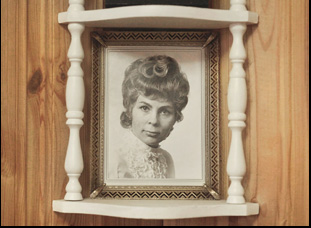 Was there anything that cracked the structure of it open?
Was there anything that cracked the structure of it open?
It changed a lot during the process of editing because we were editing and filming simultaneously for a long time and I had an idea of what film I was making, but that changed quite a few times. I didn’t know that the dead sister was going to be as important as she became in the final version, so we had a lot of different versions of this film. I wanted to find a balance where all the women that are alive like Kari, Mai and Olaug are equally important. I wanted it to be a multi-character story becausethey are all very important and it happened to all of them, not just one of them but when you make a film, all the financiers and people around you, they want to push it towards having one main character. I knew very early that that’s not the film that I wanted to make, but it was not easy to find the balance. It was also tough to balance things that happened in the past with the dead sister and things that are happening in the present. And since [the sister] is not alive and hadn’t been for a long time, it was very important that the people that were close to her like her sisters and her daughter were fine with the story I was telling and what material I was using. They trusted me and I trusted in them to make the right decisions about her.
That must be an interesting spot for you as a filmmaker when I imagine that as the family starts to have issues, you’re still in the middle of it. What was it like being a part of it?
It was quite difficult because they came to me with this happy family reunion miracle story, then it turned into something darker and something that none of us had expected. Of course, that was tough for them, but I spend a lot of time just hanging out with the people I film and drink coffee, so they trusted in me to continue even though it wasn’t the film they wanted anymore. They are very happy with the final result, but it was also tough when you know things are happening in their relations between each other and you take care of all of them.
You find the right notes in the score as well to convey this. What was it like to work on the music?
I worked with a super brilliant Danish composer Jonas Colstrup, who worked closely with the editor so the three of us found that together. Some people said during the editing that “Maybe this score is too much for a documentary. You’re not supposed to use music.” But I felt that this story is too much, so the score should feel the same. the film contains so many emotions, and of course it’s a sad story, but I wanted it to be a bit fun and have that in the score too. It’s humorous and dramatic – life is a lot of everything and so is this film.
 There’s a really great map you use to track the action, which has really vivid and vibrant illustrations. How did you get your hands on that?
There’s a really great map you use to track the action, which has really vivid and vibrant illustrations. How did you get your hands on that?
It’s interesting because I was talking to our little crew that we knew from the start that we wanted a map because it’s in Sweden and Norway and nobody knows where anything is, but we wanted to find not just an ordinary map. I went on Tradera, which is like Swedish eBay, and I saw this map and I just knew that this is the map we should have, so I went into bidding for it and I got it. And it was from sent from Gullspang! There are a thousand people living in Gullspang – it’s such a tiny place and then when I saw that’s where the seller was from, I just got goosebumps because I felt, “Okay, this is just another sign.” Making this film, I just got into their world of seeing signs and normally I don’t do that, but while I was working on this story I just saw a lot of signs myself.
What’s it been like to see the film travel?
It’s been really really amazing and beyond my expectations. When we finished the film, I wasn’t sure what this was. I was living in this story for so long and I didn’t know if it was too strange or too Scandinavian, but I’ve been traveling around with it quite a lot and I get such a great response from the audience no matter what country I go to. It’s also been amazing for the ladies, who have gotten so much good attention. All of them love the film and it’s been really good experience to bring them to festivals and to see it with audience several times.
“The Gullspång Miracle” is now available to stream on VOD and digital.
